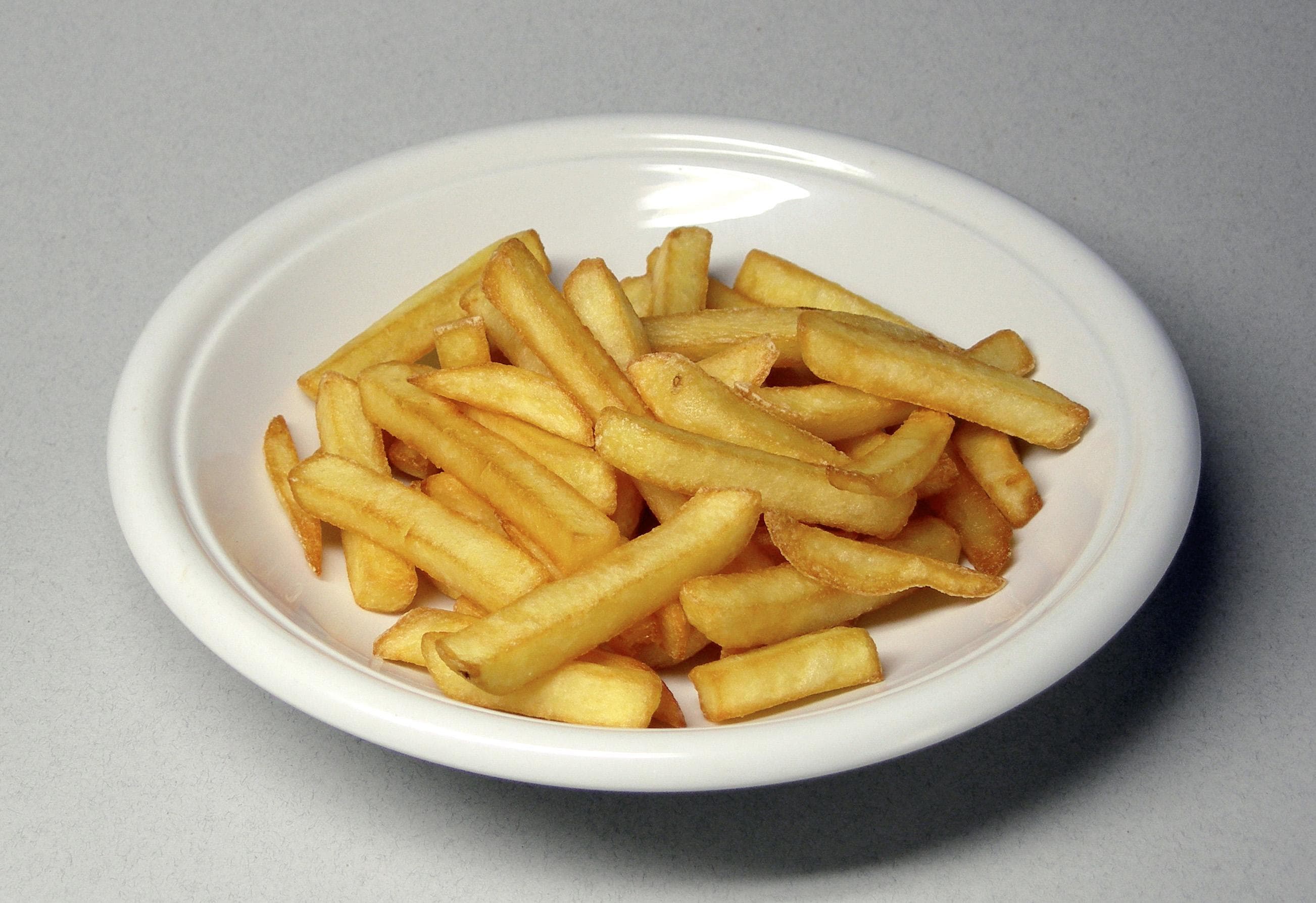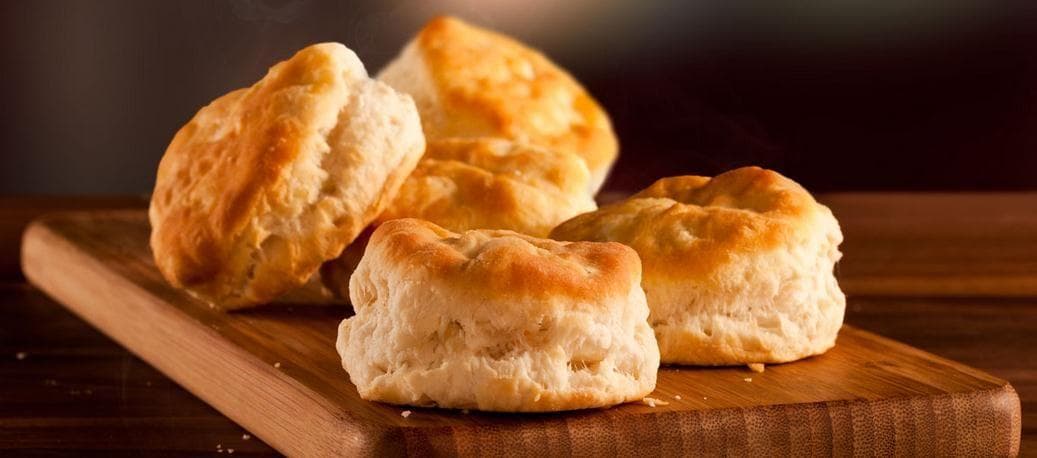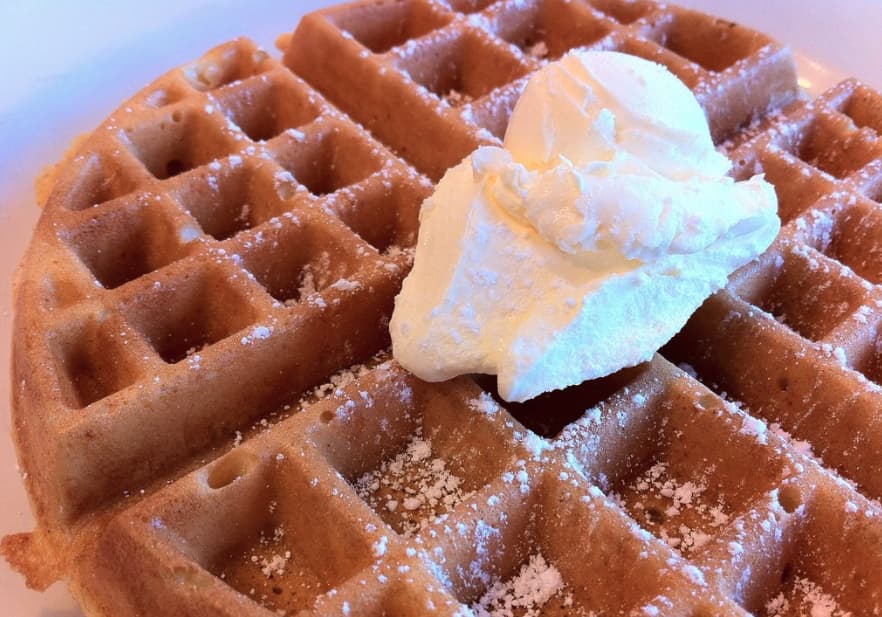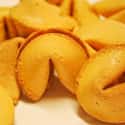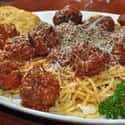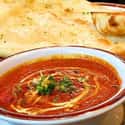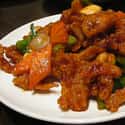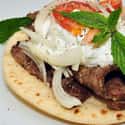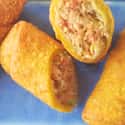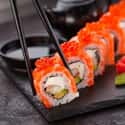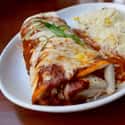-
(#1) Fortune cookie
Fortune cookies actually originated in Kyoto, with local bakeries still producing a similar style of cookie. So, how did they get co-opted by Chinese-American immigrants? The answer lies with WWII - Japanese immigrants had brought the cookies to America, but their bakeries closed when they were forced into internment camps.
Chinese-American restaurants decided to pick up where the Japanese were forced to leave off, and fortune cookies have been associated with Chinese food ever since the end of the war.
-
(#2) French fries
Despite their name, french fries are actually from Belgium. The tradition actually began with fried fish - there was a region in Belgium where poor villagers would catch little fish in the local river and fry them. In the winter, the river was frozen so they used sliced potatoes instead.
Americans came upon the fried potato treat during World War I, and since the Belgian Army spoke French, they became "french fries." They have become popular in America as a side dish with ketchup or smothered in cheese and other toppings, but in Belgium the classic way to serve them is "with cooked mussels or with a fried egg on top."
-
(#3) Corned Beef and cabbage
There seems to be a little confusion surrounding the "traditional" Irish dish of corned beef and cabbage. While the ingredients themselves can be readily found throughout Ireland, the dish may have been mistaken for another popular meal:
The dish that is more accurately considered to be Ireland’s national dish is colcannon, which consists of boiled potatoes, white cabbage, leeks or onions with added butter, milk and wild garlic.
Irish chef Noel McMeel stated that "the first time [he] tasted corned beef and cabbage was actually in Connecticut when [he] was 20 years old." While it might not actually be a staple in Ireland, corned beef and cabbage has certainly become a strong tradition in America. With millions of people celebrating their Irish heritage on Saint Patrick's Day, at least they're using Irish ingredients for their American-Irish meal.
-
(#4) Pasta
Two of the most common "Italian" foods in America today are spaghetti and meatballs, and pasta with Alfredo sauce. However, neither of these are from Italy. When it comes to spaghetti and meatballs, it's a classic story of immigrant innovation. Italians had a dish similar to meatballs, but it was always eaten separately from pasta dishes. However, in America, spaghetti and canned tomatoes were some of the most readily available ingredients; combine that with the western love of pairing starch with meat, and the meatballs and pasta came together.
As far as Alfredo sauce goes, you're not likely to find any in Italy that resembles the American version. An Italian man named Alfredo Di Lelio created a pasta dish for his wife with a butter and parmesan sauce back in 1914; since it was very popular, he continued to use it when he moved to America and opened up a restaurant. The Americans loved it, but soon modified the sauce with ingredients like cream and eggs, which are not typically used in Italian sauces.
-
(#5) Butter chicken
Although curries like butter chicken and tikka masala are considered to be "Indian food," they have gone on a long journey to get to the curries we're familiar with today: "Every well-known Indian dish is the result of a long and complicated history of invasion, fusion, emigration and circumstantial adaptation."
Colonial Britain forever changed the cuisine of India, modifying sauces that were already widely-used. They also used the word "curry" to describe any and all spicy sauces and gravies. Most modern curries come from the modifications colonial Brits requested from their cooks to make the food more to their liking.
-
(#6) General Tso's chicken
General Tso's chicken is one of the great mysteries of Chinese-American cuisine. It's origins are somewhat murky, but most people can agree that it hails from Taiwan. However, the version served in Taiwan is vastly different than the dish in the United States that happens to go by the same name:
It’s not sweet, not deep fried, and has sometimes skin and bone thing going on. It’s not the sweet, fried, chickeny dish that Americans know and love.
General Tso's cousin, orange chicken, can be readily found across the US (think Panda Express), but is found nowhere in China. It's somewhat similar to General Tso's Chicken, but is less spicy and has a sweeter sauce that includes orange juice, zest, or peel.
-
(#7) Crab rangoon
There are several aspects of crab rangoon that give away its lack of "authenticity." The first is its main ingredient: cream cheese. Crab rangoon is said to originate in either British Colonial Burma (Myanmar) or Trader Vic's, an American tiki bar restaurant. Cream cheese is not an ingredient regularly found in Myanmar, so the case for that origin story isn't very strong.
The other clue is in the name. "Rangoon" is what the British called the capital of Myanmar. Today it is once again called by its original name, Yangon, which the British mispronounced.
-
(#8) Gyro
Gyros - as most people in Western countries know them - are an American creation. They became popular in New York in the 1970s, when Manhattan saw an explosion in Greek restaurants. Gyros became the hot new fast food item, since they were served in a portable pita and were substantively different from the usual hamburger options.
The true gyro originated in the general area of the Middle East (specifically Greece and Turkey), where it is known as a döner kebab and has been sold as street food since the time of Alexander the Great.
It consists of "slices of marinated lamb, mutton, beef, veal, or chicken which are stacked on a vertical spit and roasted at a vertical grill. It is served as a type of sandwich stuffed into Turkish bread, rolled into flat bread, or laid atop diced flat bread and topped with sauces."
The major differences found in westernized gyros today are the use of ground meat instead of meat sliced off a spinning roaster, and the occasional addition of french fries. They are usually topped with lettuce and tomato.
-
(#9) French toast
French toast is a misnomer, as it's not from France. French toast as we know it today might have originated in either England or America, depending on which legend you believe.
In France, their version is called pain perdu ("lost bread") and was created as a way to use up stale, leftover bread. It's usually soaked in milk, and served with cheese. Pain perdu is considered a dessert, whereas in America it's much sweeter, soaked in milk, egg, and cinnamon, and served for breakfast.
-
(#10) Egg roll
Traditional Chinese spring rolls consist of fried rice paper wrapped around a combination of meat and vegetables. However, "while the spring roll has origins in historic China, the egg roll, as we know it today, didn’t surface until about 1930 in America."
Today's American spring rolls are now "egg rolls," although no one is sure where the "egg" part came from. While egg rolls may look and taste at least somewhat similar to the original version, some restaurants have taken some serious liberties. One of the most American versions are the "Avocado Club" egg rolls at California Pizza Kitchen - filled with avocado, bacon, Monterey Jack cheese, ranch, and chicken.
-
(#11) Pizza
Pizza has become a cultural touchstone in the US, and it sent a long way to get there. Pizza in Italy began as a flat bread meal for the working poor of Naples, and most Italians outside of the region weren't even aware of pizza as a dish until around the 1940s. However, by then Italian immigrants from Naples had already brought pizza to the East coast of the United States and taken it by storm.
The Italian-Americans were mostly blue collar workers, so they brought the traditional working-class meal of pizza with them. While the recipes remained classic for decades, after the 1940s and WWII the idea of pizza began to spread and take on new forms. In addition to the original toppings of tomatoes, cheese, oil, anchovies, basil and garlic, "California-style" pizzas emerged with toppings like BBQ chicken and smoked salmon.
Pizza in America today is mostly still recognizable, but Italians would probably be surprised by variations such as deep-dish or stuffed crust.
-
(#12) Sushi
When it comes to traditional Japanese sushi versus Western sushi, the differences are striking. In Japan, sushi is a simple dish, usually made up of sushi rice, seaweed (called nori), and fish. It will occasionally include vegetables, but not often. They are small (one bite), low-calorie, and use mainly ingredients traditionally found in Japan.
In America and other "western" countries, they've blown the beautifully simple idea of sushi wide open. You'll find rolls that are large, loaded with a large variety of high-calorie ingredients (think spider or dragon rolls), and even wrapped into waffle cones instead of classic nori rolls.
Non-traditional ingredients are used frequently, like cream cheese, fried chicken, mayonnaise, and avocado. But of all the sushi rolls to be found in the US, the Deep-Fried California Roll has to be the farthest from the traditional Japanese.
-
(#13) Burrito
Mexican food is a corner stone of cuisine in the United States - but the burrito is one of the best examples of how much it has been Americanized over the years. Burritos originated in Central Mexico, but are now largely found in the northern regions. However, they look pretty different from what most Americans are used to seeing.
The original ingredients were simple, and the end package was small; a hand-made, toasted tortilla would be wrapped around some meat, beans, salsa, and maybe a mix of vegetables. Certain states, like Chihuahua, also traditionally use locally made cheese.
In America, people create massive burritos filled with everything under the sun. Liberal use of sauces usually turns the end result to mush, so that it has to be eaten out of a foil wrapper. There has also been a shift towards the use of very non-traditional ingredients such as french fries - you definitely won't find that in Mexico.
New Random Displays Display All By Ranking
About This Tool
American food usually does not blindly pursue exquisite and high-end, fast and convenient food is more popular in the United States. The special cultural background of the United States has a great influence on its foods. If you want to understand American food culture, you must know more about American history, geography, and customs. Some of the most common foods in American are mostly innovative versions of European and Asian foods.
From burritos to pasta and German sausages, more other dishes from all over the world have been brought to the United States and become traditional American food. This is a collection of random 13 foods that are different in the United States.
Our data comes from Ranker, If you want to participate in the ranking of items displayed on this page, please click here.






